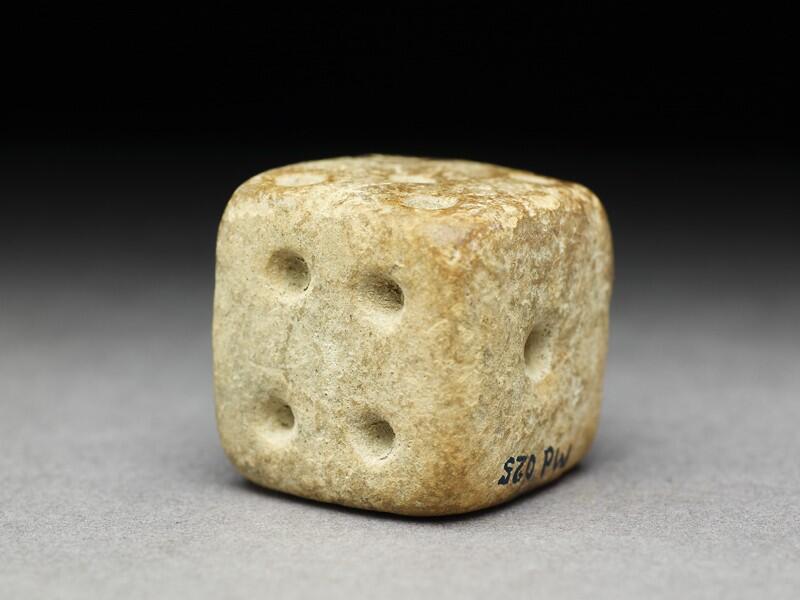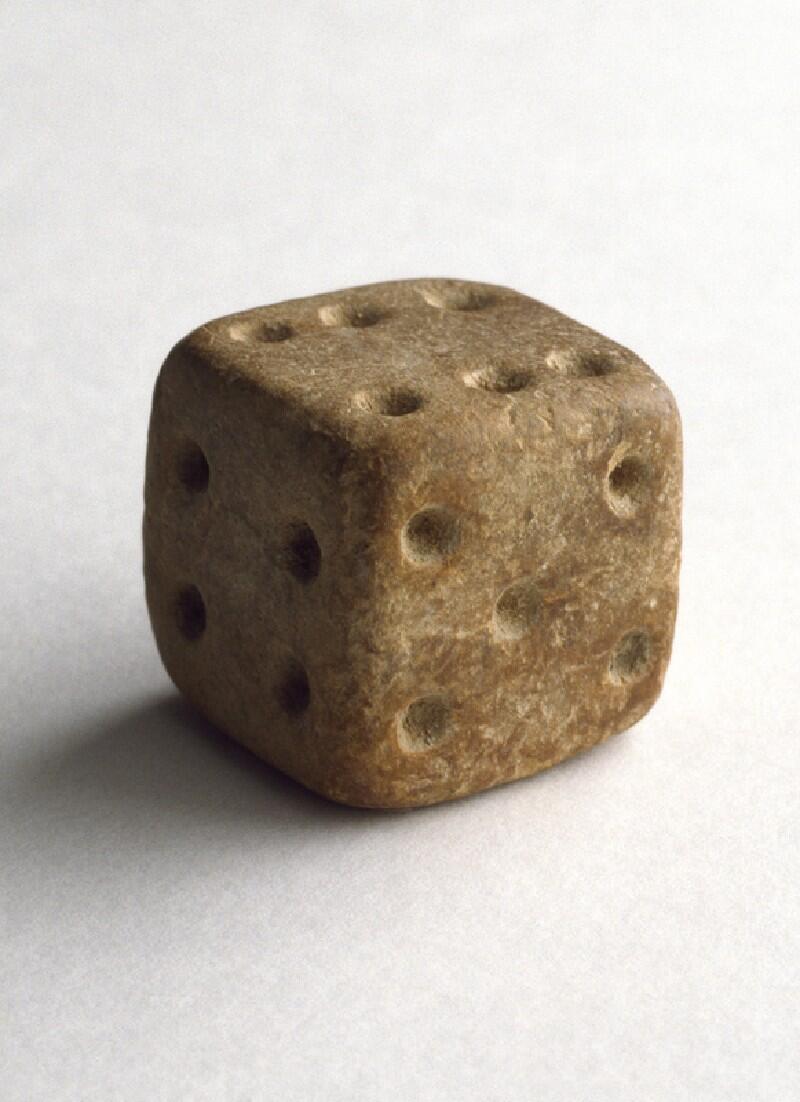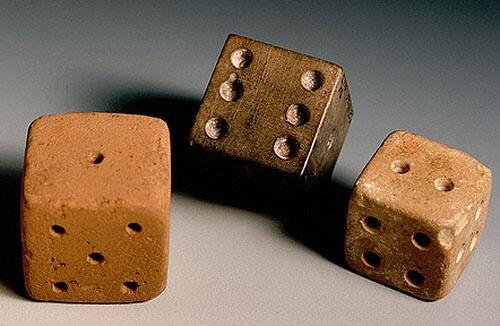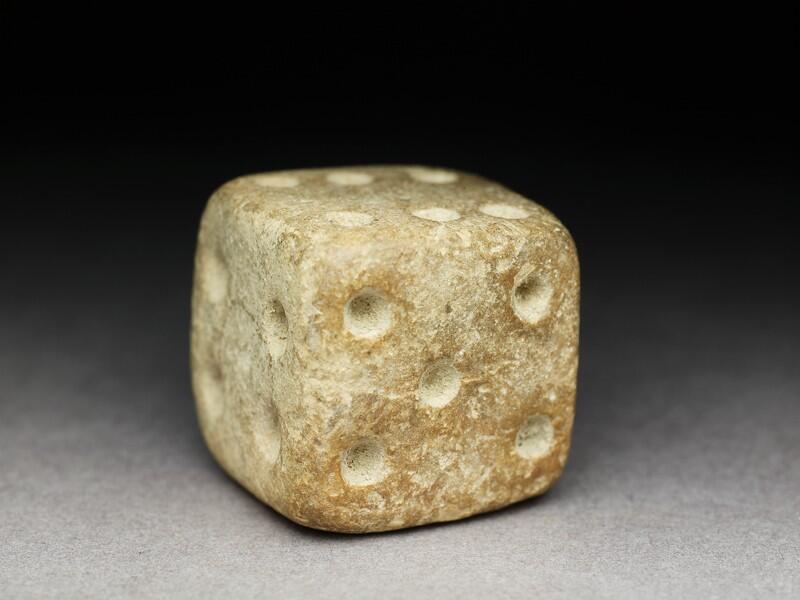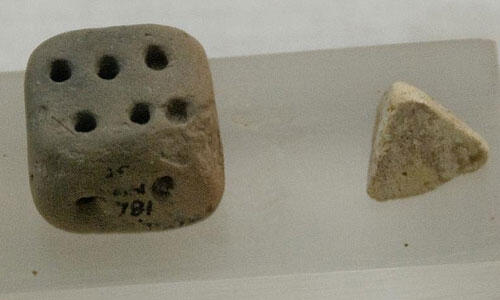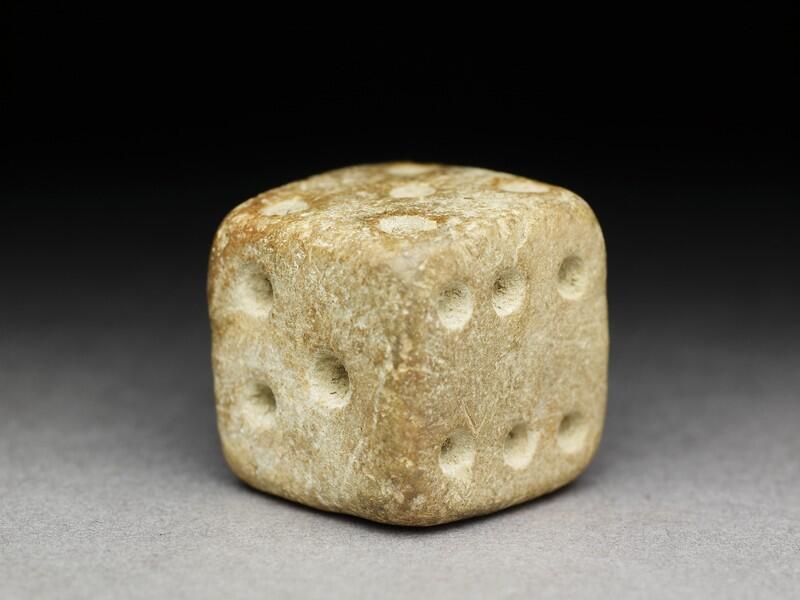By Shahid_Naeem June 15th, 2015
A cubical die with 1 to 6 dots was found in rubble during excavations at Harappa. Many such dice were also found at Mohenjo-daro. John Marshall writes: "That dicing was a common game at Mohenjo-daro is proved by the number of pieces that have been found. In all cases they are made of pottery and are usually cubical, ranging in size from 1.2 by 1.2 by 1.2 inches to 1.5 by 1.5 by 15 inches. . .. The dice of Mohenjo-daro are not marked in the same way as to-day, i.e. so that the sum of the points on any two opposite sides amounts to seven. Instead of that, 1 is opposite 2, 3 opposite 4, and 5 opposite 6. All the examples found are exceedingly well made with well-defined edges; the points are shallow holes averaging 0.1 inch in diameter. The clay of which they are made is light red in color, well baked, and sometimes coated with a red wash. These dice must have been thrown on a soft surface, such as a piece of cloth, or on dusty ground, for their edges show little sign of wear. It is not yet known whether these objects were used in pairs, but two specimens found in the Dk Area [of Mohenjo-daro], not far from each other, are exactly the same size." (Marshall, Mohenjo-daro and the Indus Civilization, pp. 551-2)
These terra-cotta dice are roughly 2cm cubes, and are dated between 1900-2500 BCE.

